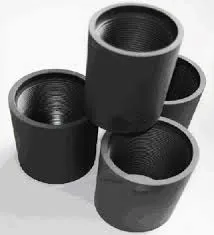- Afrikaans
- Albanian
- Amharic
- Arabic
- Armenian
- Azerbaijani
- Basque
- Belarusian
- Bengali
- Bosnian
- Bulgarian
- Catalan
- Cebuano
- Corsican
- Croatian
- Czech
- Danish
- Dutch
- English
- Esperanto
- Estonian
- Finnish
- French
- Frisian
- Galician
- Georgian
- German
- Greek
- Gujarati
- Haitian Creole
- hausa
- hawaiian
- Hebrew
- Hindi
- Miao
- Hungarian
- Icelandic
- igbo
- Indonesian
- irish
- Italian
- Japanese
- Javanese
- Kannada
- kazakh
- Khmer
- Rwandese
- Korean
- Kurdish
- Kyrgyz
- Lao
- Latin
- Latvian
- Lithuanian
- Luxembourgish
- Macedonian
- Malgashi
- Malay
- Malayalam
- Maltese
- Maori
- Marathi
- Mongolian
- Myanmar
- Nepali
- Norwegian
- Norwegian
- Occitan
- Pashto
- Persian
- Polish
- Portuguese
- Punjabi
- Romanian
- Russian
- Samoan
- Scottish Gaelic
- Serbian
- Sesotho
- Shona
- Sindhi
- Sinhala
- Slovak
- Slovenian
- Somali
- Spanish
- Sundanese
- Swahili
- Swedish
- Tagalog
- Tajik
- Tamil
- Tatar
- Telugu
- Thai
- Turkish
- Turkmen
- Ukrainian
- Urdu
- Uighur
- Uzbek
- Vietnamese
- Welsh
- Bantu
- Yiddish
- Yoruba
- Zulu
casing pup joint
Casing Pup Joints Essential Components in Oil and Gas Operations
In the oil and gas industry, casing pup joints play a crucial role in the construction and integrity of wellbores. These specialized pipe sections are designed to connect various lengths of casing, providing flexibility and stability during drilling operations. Understanding the significance of casing pup joints, their design features, and their applications is essential for anyone involved in petroleum engineering or drilling operations.
What is a Casing Pup Joint?
A casing pup joint is a short length of pipe that is used to augment the total length of casing in a wellbore
. Unlike standard casing, which typically comes in longer sections, pup joints offer the ability to fine-tune the total casing string length to meet specific engineering requirements. These joints can vary in length, generally ranging from 3 to 10 feet, and they come in various sizes to match the casing being used.Design Features
Pup joints are available in different materials, with API (American Petroleum Institute) standards providing guidelines for their construction and quality. The most common material used is carbon steel, which offers excellent strength and resistance to pressure and corrosion. The threads on pup joints are also designed to match the standard casing threads, ensuring a secure connection that can handle the severe conditions encountered during drilling operations.
casing pup joint

Another critical aspect of pup joints is their ability to accommodate the thermal expansion and contraction that can occur in wellbores. As temperatures fluctuate, the materials expand or contract, and pup joints provide the flexibility needed to maintain the integrity of the casing string without compromising well stability.
Applications in Drilling Operations
Casing pup joints are primarily used in several applications during oil and gas drilling operations. One of their main uses is in adjustments of the casing string lengths after drilling to specific depths. When drilling encounters unexpected formations or drainage pressures, adjusting the length of the casing string can make a significant difference in controlling the well.
Additionally, pup joints are instrumental in maintaining well integrity during completion operations. They provide an easy solution to adjust spacing and accommodate various downhole tools, including packers, testing equipment, and completion assemblies. The use of pup joints helps in optimizing the setup for effective extraction of hydrocarbon resources.
Conclusion
In conclusion, casing pup joints are a vital component in the oil and gas sector, serving as critical connectors that enhance the versatility and performance of casing strings. Their design, materials, and applications underscore their importance in maintaining the structural integrity of wellbores during various drilling and production processes. As advances in drilling technology continue to evolve, the role of casing pup joints remains essential for efficient and safe extraction of oil and gas resources. Understanding these components is essential for engineers and operators alike, as they strive to improve efficiency and reduce operational risks in the ever-demanding energy sector.
-
Well Casing Extension Couplings – Applications and InstallationNewsJun.06,2025
-
Types of Crossover Subs in Drilling & CompletionNewsJun.06,2025
-
Key Features of High-Quality Tubing Pup JointsNewsJun.06,2025
-
Installation and Maintenance Tips for Steel Couplings for PipeNewsJun.06,2025
-
How to Select the Right Pup Joint for Oil & Gas OperationsNewsJun.06,2025
-
Applications of Stainless Steel Pipe CouplingsNewsJun.06,2025







